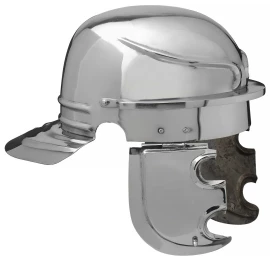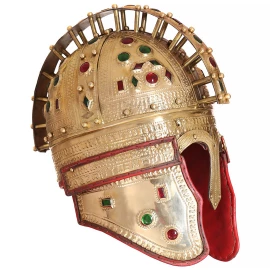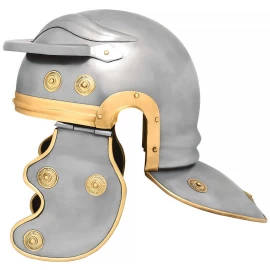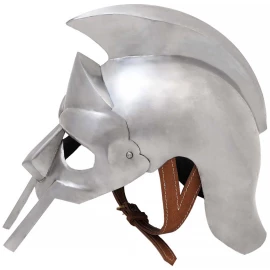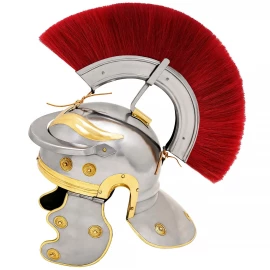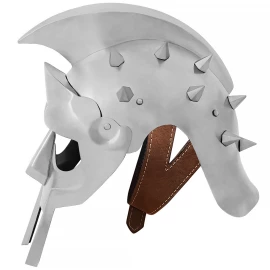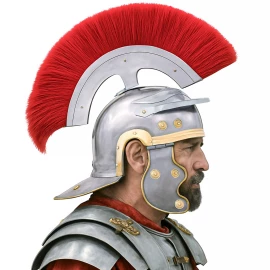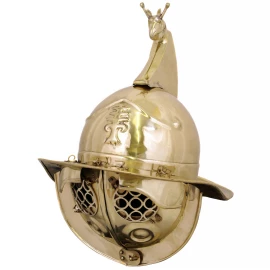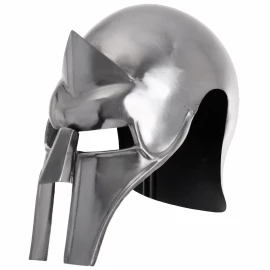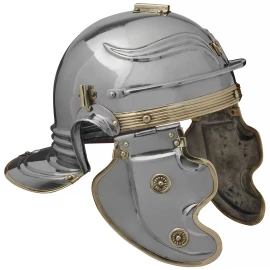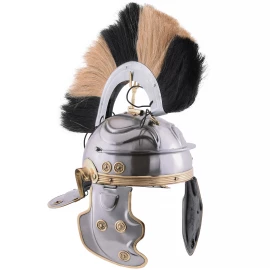Ancient Roman helmets
Filter products
Roman helmets
The helmets of the Romans were in the early Roman history strongly influenced by other cultures, especially by the Etruscan, Celtic and Greek. Variants of the Attic and Chaldiki Helmets were among the Romans usual. Examples are Cassis, and the Etrusco-Corinthian helmet and simple conical helmets. Celtic were under the influence of foot soldiers from the 4th Century BC, the Montefortino, a very simple helmet with cheek guards, preferably while officers and cavalry helmets also particularly like the Attic contributed. All these helmets could be decorated with feathers or horse hair (crista) and had hinged cheek pieces.
After the conquest of Gaul by Julius Caesar in the 1st Century BC were the Romans who produce uniform helmets. First it was the Coolus-type, a bronze helmet with a round bell and Celtic style cheek pieces, which could be tied together with leather straps.
From 1st Century on, iron helmets were made. An example is the Imperial Gallic helmet (Weisenau). This is similar to Coolus helmet, but had a flatter bell. In addition, the helmet could have indicated helmet and bronze fittings (as decoration and reinforcement) and ear protection. A popular ornament was engraved on the front "eyebrow". The helmets were soon copied by Italian forging. These were equipped with traditional Italian cheek flaps and were often of lower quality than the originals.
Towards the end of the Western Roman Empire late antique comb helmets were worn. These are set very high helmet bell made of two halves, the cheek pieces were quite large and immobile, the neck protection, however short and continuous almost vertical. On the front was indicated eyes are engraved as decoration.
The Romans seem to have begun to customize specialized types of headgear, in particular for gladiator fights. The most famous is the gladiator helmet Murmillo. This helmet has a large forehead and neck protection and a mesh-face protection. It also had a large ridge that could be provided with a crest.

